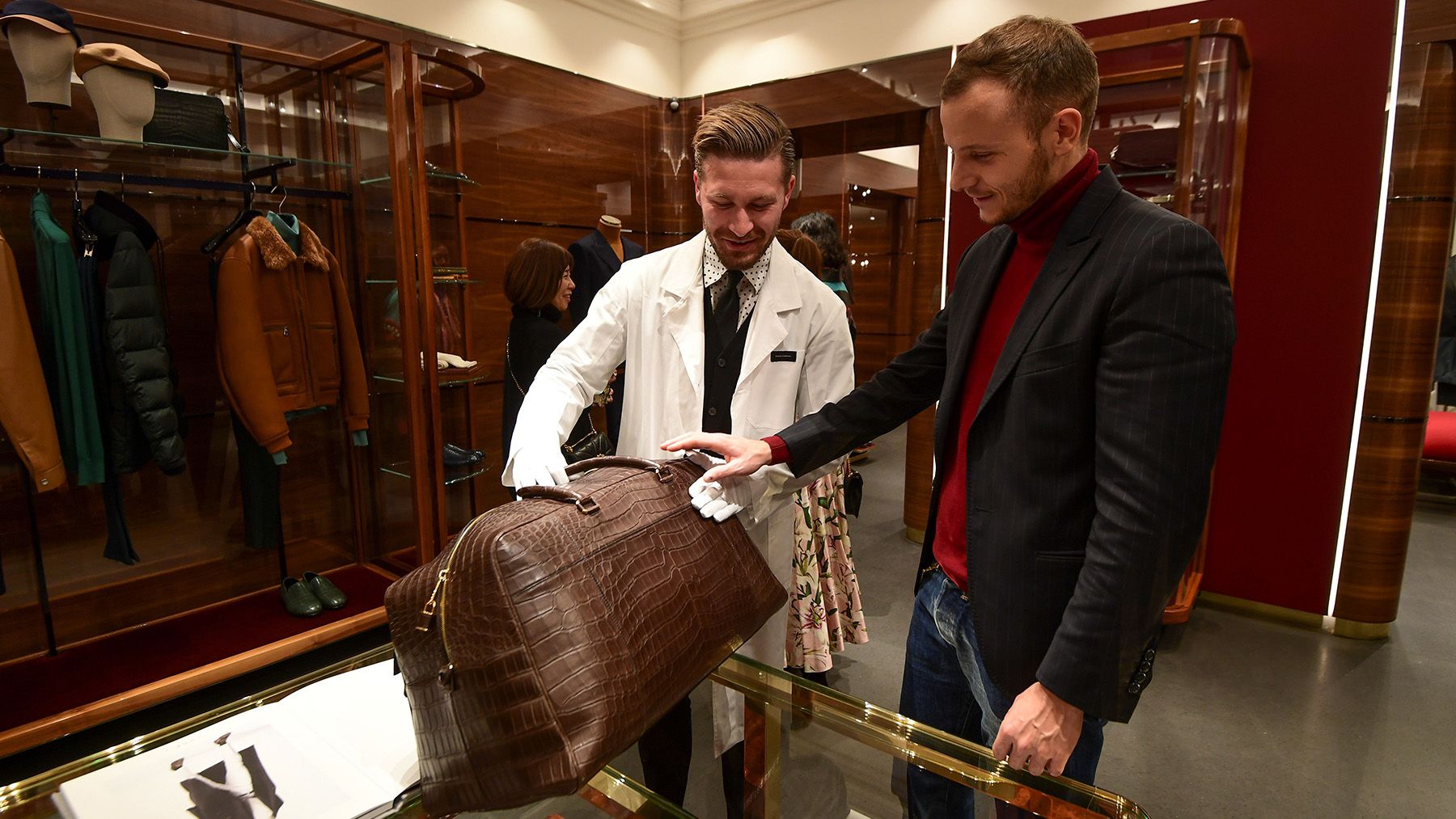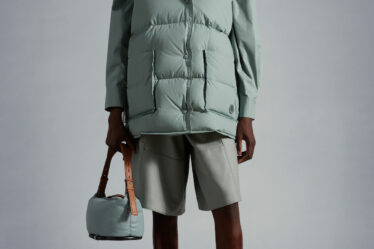
On any given day, about 150 staffers are stationed around Tiffany & Co.’s Manhattan flagship, touting the jewellery brand’s “Bird on a Rock” brooches, “Lock” bangles and bone china in trademark blue.
At the behest of shoppers browsing the 10 floors of the luxury maison, these “client advisors,” as the brand calls them, can answer nearly any question about the 40-plus pieces of fine art adorning the walls, and architectural elements of the building itself, which opened its doors in April following a four-year-long renovation. On the 10th floor is a private space accessed by invitation-only to the brand’s top clients. That level is typically serviced by a bartender, three waiters and two members of Tiffany & Co’s client experience team. Client advisors also accompany their guests as needed throughout the day.
Tiffany & Co.’s investment, both in the brick-and-mortar space and the small army required to staff it, is a sign of times.
The white glove treatment — a premium shopping experience that as a baseline includes one-to-one attention, a curated product assortment and champagne service — has long been integral to what made luxury brands luxurious. Online shopping was once seen as a threat to this model: did shoppers on a website need a personal concierge to pick out a handbag?
But the rise of e-commerce has instead had the opposite effect. Luxury brands have invested heavily in stores that promise an experience that can’t be found on the Internet. Tricked-out flagships now satisfy post-pandemic appetites for real-world experiences. High-end labels that have repeatedly raised prices in recent years must also work harder to convince customers to spend $6,000 for a Chanel bag or $1,200 on a Gucci monogrammed shirt.
Curating the perfect luxury experience often comes down to hiring and training the right staff: sales associates fully briefed on a brand’s heritage and product lines; specialists who are adept at forming personal bonds with every customer who walks through the door; and personal shoppers who become the confidantes of top clients.
Finding and keeping store staff is easily the “number one pain point” for most luxury CEOs and HR leaders right now, said Lisa Yae, managing partner of the retail & luxury goods practice at Hanold Associates. In the US and other major markets, competition for candidates is fierce as brands open more stores, and the list of qualifications keeps growing longer.
“The biggest priority is just attracting and retaining that customer associate and creating rewarding career experiences,” she said.
Here, BoF explores the reasons luxury brands are struggling to find skilled salespeople and how to solve them.
Outdated Talent Profile and Expectations
Historically, luxury brands have relied on poaching from each other to staff their stores. To this day, many of these brands expect incoming sales professionals to have already cut their teeth in customer-facing roles with a competitor and bring with them “an amazing client book” of customers with whom they cultivated a relationship, said Sukeena Rao, co-founder and chief commercial officer of Luminaire, a company that offers personal shopping services.
An open job posting for a sales associate role at Gucci’s store on Fifth Avenue in New York calls for “[three-plus] years of luxury fashion sales experience preferably in a similar role or customer service setting” and the ability to “maintain an active, accurate, neat and organised client book.”
But as brands’ staffing needs grow, they increasingly must “open up the parameters” in terms of how they recruit, Yae said.
Instead of a traditional resumé, some brands have started to request short video clips and Instagram/TikTok inspired reels from prospective salespeople. That allows candidates, including those with little sales floor experience, to demonstrate soft skills, like strong communication, an upbeat personality and a passion for the brand, Yae said. Ringing up sales brand history and managing a client list can be taught, she added.
At Nordstrom, Jessica Cloutier, senior director of styling and sales, said the company has recently begun recruiting from the real estate sector, where sellers “learn to build thriving businesses and work their client book.”
“And then, we’re going to teach the fashion side of it,” she added.
Time for a Raise
The average base salary for a luxury sales associate in the US is $35,260 per year, and total compensation for the role can tick up to about $45,025 per year, including cash bonuses, commission and tips, according to Glassdoor. Most luxury brands pay an hourly rate of around $21 to $23 for these jobs, Glassdoor estimates.
Those wages outpace the $15-an-hour minimum many mass retailers offer for store roles. But if luxury brands are to bill their sales jobs as full-fledged careers, they will need to get more aggressive about upping the base pay in tandem with what they expect from their staffers, some experts say.
Wages in a full range of service sectors — including at fast food restaurants and bars — in many cases are surpassing $18 to $20 an hour, and companies have gotten competitive around promoting their higher salary offers.
Rather than offer a hefty base pay, high-end brands and retailers have long relied on commission based on the volume of sales their associates generate. Those earnings can vary widely for different brands (even within the same conglomerate) and aren’t a huge draw for workers in this economic climate.
Retaining these employees is critical: personal shoppers can contribute 30 percent to 40 percent of some brands’ overall sales, Rao said.
“If brands really want to retain and attract this talent and have them stay on a more long-term basis … they’re going to have to compensate more,” she said.
More Than Sales
In-store staff are being asked to do more as well. In an increasingly tech-driven selling environment, a luxury sales associate may be expected to sift through, understand and implement customer data, manage online orders and use their personal cell phone and social media to engage clients.
An online posting for a full-time sales associate for Balenciaga men’s shoes at Bloomingdales calls for a candidate who can “drive sales with in-store and online clients by embracing and being proficient with technology.” Another, for a “personal shopping selling assistant” at Neiman Marcus, lists among the job duties: assisting with “digital selling and social media presence” and processing merchandise for the retailer’s resale and consignment boutique Fashionphile.
That luxury brands and retailers are making steps to develop a more well-rounded sales model — where they better connect their high-touch selling experiences across stores and online — is a step in the right direction, said Sandy Sholl, founder and executive chair of luxury goods distribution company, MadaLuxe Group.
But brands must do their part to provide the training their sales associates need in order to embrace and perform these kinds of duties, she said. (Some luxury brands have started to launch their own school-like programmes aimed at reinvigorating sales roles. In January, SMCP Group, the French holding company for ready-to-wear labels Sandro, Maje, Claudie Pierlot & De Fursac, unveiled a training academy for sales associates, dubbed SMCP Retail and LVMH’s Métiers d’Excellence Institute, launched in 2014, offers training in retail services skills for people looking to break into the luxury fashion industry.)
“We feel very strongly that there is a need for salespeople again, but they need to be educated,” she said. “And one of the reasons why people don’t want the job is because there’s not been a focus on it. Nobody has made it sexy.”
Nordstrom’s Cloutier said the department store learned that many of its sellers were becoming “micro content creators,” using their personal social media accounts to engage with and sell to their customers. The result is that sellers are earning extra commission even while they’re off the clock or engaging other clients on the selling floor, which the company hopes will boost their morale and productivity, she said.
“What’s fun about that is we’re finding very tenured sellers, who drove very successful business and brick and mortar, now seeing the success of these like newer content creators, and they’re starting to think about how they, too, can do that,” she said.



